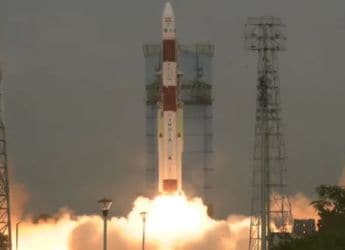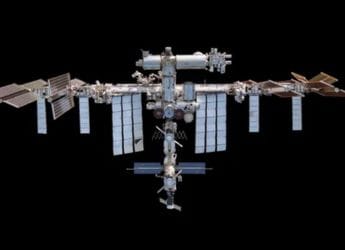- Home
- Transportation
- Transportation Features
- Okinawa Scooters on Its Plans of Producing 10 Lakh Electric Scooters Annually in India
Okinawa Scooters on Its Plans of Producing 10 Lakh Electric Scooters Annually in India
Okinawa Scooters is in second position in the electric two-wheeler market in India.

Okinawa Scooters plans to invest Rs. 150 crore to set up a new manufacturing facility in Rajasthan
When you hear of Okinawa Scooters, it doesn't immediately align as an Indian brand. Co-founder Jeetender Sharma was so inspired by his visit to the environmental-friendly Okinawa Islands in Japan, that he decided to come back and begin an electric vehicle startup in the country, in the hopes to push the country to make conscious choices. When we think of electric vehicles, we think of Ather and Hero Electric as the top brands in the EV space, but Sharma's Okinawa Scooters is in the second position in the electric two-wheeler market, just behind Hero Electric with more than 90,000 scooters on the road
According to a recent Autocar Professional report, Hero Electric continued to retain its leadership position in 2020 with sales of 8,111 units followed by Okinawa Autotech with 5,564 units. While the pandemic last year ruffled the EV growth trajectory with factories asked to shut down, Okinawa Scooters plans to target three times growth in sales this year over the last one. Sharma looks to invest Rs. 150 crores to set up a new manufacturing facility in Rajasthan that will initially have an annual capacity to produce as many as 500,000 to 600,000 electric two-wheeler units in the first phase, and up to 1,000,000 units in the future. The company is also looking to introduce an e-motorbike into the Indian market soon.
![]()
Expert Opinion: Counterpoint Research Analyst, Soumen Mandal feels like EV startups will be impacted due to the second COVID-19 wave in India. He says, “High-speed electric two-wheeler (e2W) sales in India decreased by 5% to reach 25735 units in 2020. However, e2W penetration of total two-wheeler sales increased slightly during last year. Cumulative sales of e2W since 2019 stands at 52959 units at the end of 2020, but only 31813 units qualified for the FAME II scheme. Only 10 two-wheeler brands qualify for getting FAME II subsidy. Under the FAME II program, the Indian government tried to sell 1 Mn e2W by March 2022, but it couldn't encourage consumers. The stringent criteria aren't helping local manufacturers with lower scale and consumers are not finding e2Ws affordable as well. More investment in establishing public charging stations and direct benefit to consumers will help to shift from conventional fuel bikes to e2Ws.”
Mandal adds, “Hero Electric was the leading e2W market in India, followed by Okinawa Scooters, Ampere Vehicles, Ather Energy and Revolt Motors. Among new-age start-ups, Okinawa Scooters is ahead of other brands, but it couldn't cope up with the negative impact of COVID-19 impact. Total e2W sales of Okinawa Scooters decreased by more than 50 percent.”
“The automotive semiconductor shortage will impact more on e2W production compared to conventional fuel vehicles. There is less chance of revival of the Indian automotive segment during this year due to the negative impact of COVID-19 second wave and people will be more cautious in spending to deal with third-wave COVID-19,” he feels.
![]()
Founder of Okinawa Scooters, Jeetender Sharma
We spoke to Founder of Okinawa Scooters, Jeetender Sharma to know a bit more about the company's journey so far and its future plans.
1. What were you doing before you began Okinawa?
I started my journey working in the quality department of LML scooters where I spent three and a half years. Later, I joined Honda two-wheelers in India and invested immense time in the company's two-wheeler plant located in Gurgaon. After spending nearly two decades in the two-wheeler segment, I had my mind and heart into it - to build a brand from the ground up that not only serves the purpose of mobility for the masses but is eco-friendly and sustainable for future generations to come.
2. When was it you finally decided you wanted to start Okinawa? Please elaborate on probably that one scenario that cemented your intention to work towards making Okinawa a reality.
A trip to Okinawa Islands in Japan is what inspired me to look at manufacturing Electric Vehicles. The people of Okinawa island are known to have the longest lifespans in the world - thanks to close-to-zero pollution. The company - Okinawa Autotech, hence, was born with the sole vision of creating a healthy environment where people's life expectancy can improve. Today, we have over 90,000 Okinawa electric scooters on the road. We urge people across the country to switch to smart e-vehicles; for the same, as a company, we have run many initiatives that have played a role in educating the end-user as well as businesses on the usage and benefits of Electric Vehicles for a better tomorrow.
3. Were there any operational challenges (or any other challenges) that you faced when starting Okinawa? Please offer our readers details on what those challenges were and how you overcame them.
We faced many operational challenges initially that included the arrangement of resources like good suppliers who were willing to manufacture parts (components) of the electric vehicle, and retail bank financing for the consumers. However, the most important one was getting consumers to believe and put their trust into EVs, given that there were and continue to be numerous myths around its adoption.
We started off by convincing the supply chain stakeholders that they are investing in the future of vehicles and are fully capable of starting the business. The next step was making the banks understand that Electric vehicle is a reliable product and once they start financing it, this will boost their business. Finance by banks enabled many consumers to incline towards Okinawa.
We then did many BTL activities to make the customer understand the need for electric vehicles. We created awareness by asking the customers to ride the vehicle so that they could get a better understanding of the performance of the vehicle and how beneficial it is for them in terms of running cost, less requirement of servicing, and ease of riding. They could feel and touch the comfort of handling it in the long run. They were also convinced that it will bring benefits to society as a whole.
4. Could you share some interesting stories about your initial days? What learnings have you picked up from those hustle days?
The EV industry is fairly nascent when it comes to consumer adoption. The first step we took was to break several prevalent myths about EVs among consumers and other stakeholders. To understand these myths and concerns in a better way, we conducted extensive consumer research. Some of these myths were around the possible speed of Electric Vehicles, the range anxiety (how far does it travel on a recharge cycle), and the performance of any product (weight carrying capacity, traveling on the rough Indian roads, etc.). With these insights, we came out with our first EV, which was India's first high-speed electric vehicle that could touch the maximum speed of 55 Km/hr, covering up to 90km on a charge cycle, and offered a loading capacity of up to 150 kilograms. Moreover, the look and feel of the EV is as good as a traditional internal combustion (IC) engine. Going forward, we will continue to have an evolutionary approach to our product designs for our consumers.
5. While moving towards electric vehicles is the next logical step, how far do you think India is, with respect to infrastructure, before seeing real leaps in the auto landscape?
The electric vehicle (EV) market in India is expected to go through an exponential growth cycle over the next five years. This is due to many factors including the need for a futuristic transportation system that runs on clean energy, the Government's focus on local manufacturing, interest from traditional as well as new age automobile manufacturers which is duly supported by investors, growth of charging infrastructure, and so on. As per a joint report by KPMG in India and CII titled ‘Shifting gears: the evolving electric vehicle landscape in India', the country is expected to have 25 to 35 percent two-wheeler EVs and 65 to 75 percent three-wheeler EVs by 2030. Even though COVID-19 has posed some short-term roadblocks, we are confident that these numbers can be achieved and even surpassed through a collaborative effort by all the stakeholders.
6. Which is the cheapest electric scooter in your portfolio? What is its maintenance cost per month?
Our most pocket-friendly scooter is the Okinawa R30 which starts at the price of Rs. 58,785 in India. It is available in only one variant and 5 different colours to choose from.
7. What is the battery charging technique used in your scooters? How long does it last per charge?
All our products are powered by detachable lithium-ion batteries; which is our USP: the user can take out the battery and charge using any normal plug point. It is as easy as charging your mobile phone. There is no special infrastructure required. It takes only about 45 minutes to 1-hour to charge 80 percent of the battery and two to three hours to charge a full battery.
8. The lack of charging infrastructure is also a huge hurdle in the adoption of EVs in the near future? How does Okinawa plan to overcome this challenge?
The ecosystem for EVs, i.e. OEM efforts, charging infrastructure, dealership network, and retail financiers are picking pace steadily. As mentioned above, the projections in KPMG in the India-CII report are a testimony that the country is ready for the adoption of EVs.
Being a two-wheeler manufacturer, we are of the opinion that charging infrastructure is not that big a problem, especially in the adoption of electric two-wheelers. At Okinawa, we thought ahead of time to eliminate this challenge to some extent by providing detachable lithium-ion batteries in all our products allowing users to take out the battery and charge using any normal plug point.
9. Could you help give a sense of how far Okinawa has come? From when it began to where it is now
Okinawa Scooters was founded in 2015 by me and my wife - Rupali Sharma. She is the Chairperson and Co-Founder of the company. Today, Okinawa is one of the fastest-growing and most disruptive EV manufacturers in India. Being the first company to get FAME II approval from the government of India to opening our manufacturing facility in Bhiwadi, Rajasthan, to launching India's first customisable B2B electric two-wheeler to enable ‘Services on Wheels', we have come a long way.
Within five years of inception, the company has set new benchmarks and emerged as one of the top-two highest-selling electric two-wheeler brands in India.
Okinawa has emerged as one of the most popular electric scooter manufacturers in India. We launched our first electric two-wheeler in India in 2017. Currently, we have six electric scooters in our portfolio in the price range of Rs 50,000 to Rs 1.14 lakh. These are a mix of Li-ion Slow-Speed and Li-ion High-Speed Scooters.
Right now, we have more than 90,000 of our scooters on the road. In terms of year-on-year growth, Okinawa sold 32,186 scooters in 2018, 28,980 scooters in 2019 and due to the hit of COVID 19 in 2020, we sold 30,930. However, we are planning to target three times growth in sales this year over the last one.
In terms of revenue growth, we clocked annual revenues of Rs. 155 crores in FY 2021 and aim to increase this by 300 percent in FY 2022. This will be done on the back of a strong product innovation ecosystem, geographical expansion, and the rising adoption of e-mobility in the country.
10. Your website says that you plan to launch a motorbike soon. Please do elaborate more
With the kind of interest and traction received from customers all across India for our electric scooters, we are more than confident to launch even more disruptive products in the market. We are all geared up to launch our first electric motorcycle in India soon. The product will be at par with its counterparts in the industry. Okinawa Oki 100 will have a speed of 100 kmph with a range of 150 km per charge.
11. Okinawa recently announced its partnership with Weelectric for last-mile delivery. Are there more such integrations in the pipeline?
Yes, we have recently partnered with Weelectric to focus on working with companies involved in last-mile delivery operations across India to help them switch their two-wheeler delivery fleet to electric vehicles. A couple of other such partnerships are also under discussion and we are seeing heightened interest in this regard. As and when things get finalised, we would be happy to share more details.
12. What was it like sailing through the COVID-19 crisis? Did you see a fall in business or an unexpected surge? How did you deal with it?
The pandemic deeply impacted the industry resulting in lesser sales than anticipated. Despite that, we sold 30,930 units in the last fiscal year. During this period, Okinawa Praise Pro surfaced as the top-selling electric scooter for us. With our strong vision and continuous innovation, we were successful in launching India's first B2B electric two-wheeler i.e., Okinawa Dual which aims to 'transform the delivery sector and magnify efficiency for businesses' in January 2021. For this fiscal year, we intend to triple the sales for which we are rigorously strengthening our presence all across the country for all the Indians who choose to contribute their bit to a greener future on the planet.
13. Do you have any management mantra/ advice that you'd like to share with future entrepreneurs?
My Management Mantra is driven by Passion, Speed, Dedication, and Focus on Target. All entrepreneurs must imbibe the passion to dedicatedly work promptly towards their one-focused target.
14. What are the big plans for the future?
As of now, about 92 percent of components in our electric vehicles (EVs) are made-in-India. We are planning to invest Rs. 150 crore to set up a new manufacturing facility in Rajasthan near the company's existing plant in the State. The new manufacturing facility will have an annual capacity to produce as many as five to six lakh electric two-wheeler units in the first phase which could go up to 10 lakh units in the future. We are also planning to launch two more new products this year.
15. What is the employee strength? Is Okinawa hiring currently?
Currently, Okinawa is led by 250 passionate enthusiasts and we are actively expanding our team.
Catch the latest from the Consumer Electronics Show on Gadgets 360, at our CES 2026 hub.
Related Stories
- Samsung Galaxy Unpacked 2025
- ChatGPT
- Redmi Note 14 Pro+
- iPhone 16
- Apple Vision Pro
- Oneplus 12
- OnePlus Nord CE 3 Lite 5G
- iPhone 13
- Xiaomi 14 Pro
- Oppo Find N3
- Tecno Spark Go (2023)
- Realme V30
- Best Phones Under 25000
- Samsung Galaxy S24 Series
- Cryptocurrency
- iQoo 12
- Samsung Galaxy S24 Ultra
- Giottus
- Samsung Galaxy Z Flip 5
- Apple 'Scary Fast'
- Housefull 5
- GoPro Hero 12 Black Review
- Invincible Season 2
- JioGlass
- HD Ready TV
- Laptop Under 50000
- Smartwatch Under 10000
- Latest Mobile Phones
- Compare Phones
- Vivo Y500i
- OnePlus Turbo 6V
- OnePlus Turbo 6
- Itel Zeno 20 Max
- OPPO Reno 15 Pro Mini 5G
- Poco M8 Pro 5G
- Motorola Signature
- Vivo Y50e 5G
- Lenovo Yoga Slim 7x (2025)
- Lenovo Yoga Slim 7a
- Realme Pad 3
- OPPO Pad Air 5
- Xiaomi Watch 5
- Huawei Watch 10th Anniversary Edition
- Acerpure Nitro Z Series 100-inch QLED TV
- Samsung 43 Inch LED Ultra HD (4K) Smart TV (UA43UE81AFULXL)
- Asus ROG Ally
- Nintendo Switch Lite
- Haier 1.6 Ton 5 Star Inverter Split AC (HSU19G-MZAID5BN-INV)
- Haier 1.6 Ton 5 Star Inverter Split AC (HSU19G-MZAIM5BN-INV)

















